Museum hopping in London: a visual treat in culture and history
Are you looking for a holiday full of fun and with a peek into the past? Here’s a firsthand account of an exciting vacation spent on museum hopping in London, the cultural haven for history lovers across the world.
It was our first holiday in London and my 9-year-old son and I had decided to go museum hopping in the world’s most culturally-rich city. It turned out to be a vacation where we cut across continents, traversed colossal timelines, checked out dinosaurs and fossils, admired the art of the European Renaissance period and the post-modernist era and much more.

London is rich in culture and history
There are over 600 museums in London, we were told on our first day in London, while we were on one of the famous “London Walks” walking tours with our guide, Simon. Yes, it looked like London could make a museum out of anything! There are museums dedicated to people – from John Keats, Freud, Churchill to Sherlock Holmes. Then, there are themed museums on toys, crime, war, sewing machines, cinema, fashion and textiles, bells, fans, and even cricket!
Whichever museum you choose, you get to experience and relive history; and that’s what was exciting. Many of the structures that house the museums are as fascinating as what’s in them. Also, the best of London’s museums has had no entry fee since 2001! This is quite important when one is considering what to see and do in one of the world’s most expensive cities.
First stop: A tryst with natural history

Natural History Museum
The Natural History Museum was the first destination we hit, for my son’s sake who loves nature. Often referred to as ‘the cathedral to nature’, the Romanesque 138-year-old imposing building is a piece of history in itself.
The tone and scale of the museum is set at the massive entrance of Hintze Hall with a 25-metre suspended blue whale skeleton (named Hope), with Charles Darwin set in marble watching over the hall.
You are drawn into a world of dinosaurs as you enter. You can sketch and paint animals at interactive counters, admire animal drawings and prints, look at the rare first edition of Charles Darwin’s ‘On the Origin of Species…’, marvel at the fossils or admire the taxidermy of birds and animals collected by physician-scientist-collector Sir Hans Sloane on whose personal collection the Museum was built.
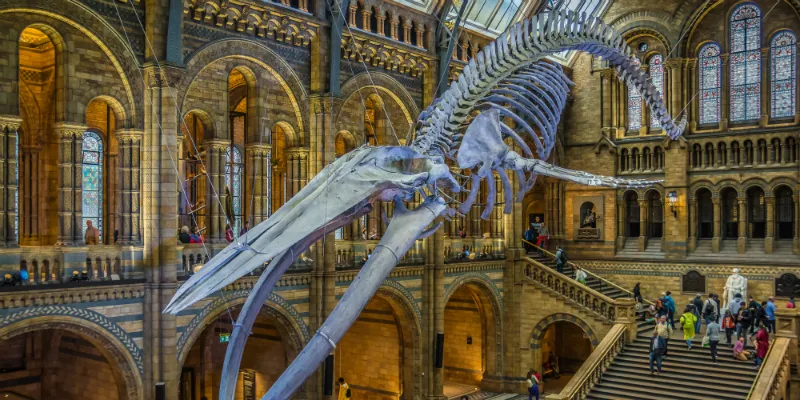
The interiors of the Natural History Museum
There is a method to the madness in the maze, we discovered. You can download free apps that take you on a ‘highlights’ tour. Audio guides offer commentary, music and more. Almost all the museums offer short free guided live tours of certain sections every hour. You need to check the museum website and turn up on time. But if you want to go with the flow of things, go ahead and be surprised at every corner. (We tried both!)
Artist heaven
Our next ambitious expedition was to The National Gallery that is full of European masterpieces. The diptychs of the 1300s, the works of Raphael and Michelangelo, Vermeer, Vincent van Gogh’s Sunflowers, the classic Monets, Rembrandts, Da Vincis – all under one roof – were simply overwhelming. If you have all the time in the world, then please lose yourself floor by floor or section by section.
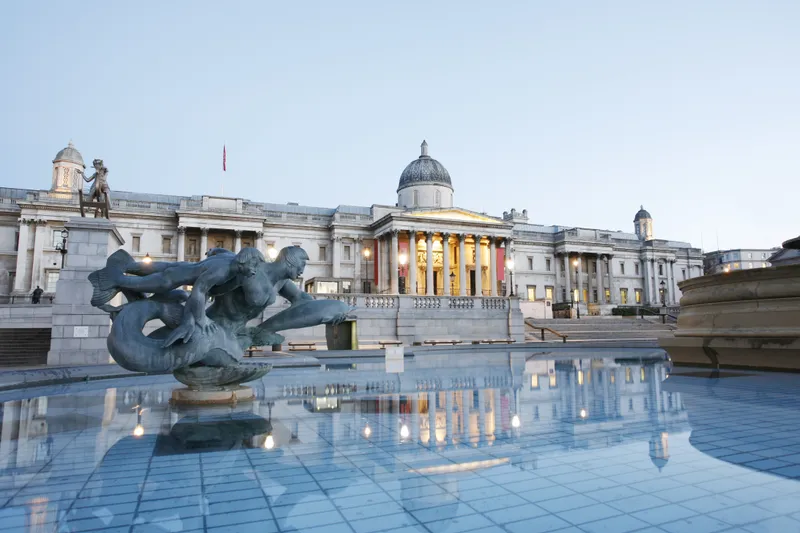
The National Gallery
But for most of us, hard pressed for time, and sometimes patience, it helps to pick up a map, figure out the sections you don’t want to miss, and put them down on your must-see list.
The National Gallery has 66 sprawling rooms! So, you can pick the 30-must see paintings they have curated. We decided that our interest was in the artists post the 1700s and spent more time with them. And at any given time, there are several other curated exhibitions going on in each museum.
Dropping by the treasure trove
Very soon, we also understood what ‘museum fatigue’ meant – so we took a break and went to a park for the rest of the evening. (Most museums close by 5pm anyway).
The Victoria and Albert Museum found a special place in our heart because of its sheer size, range, and vast treasures. With over 60,000 objects spread over six levels, they offer a self-guided “20 Treasures” tour of objects considered “most precious, famous or intriguing”.
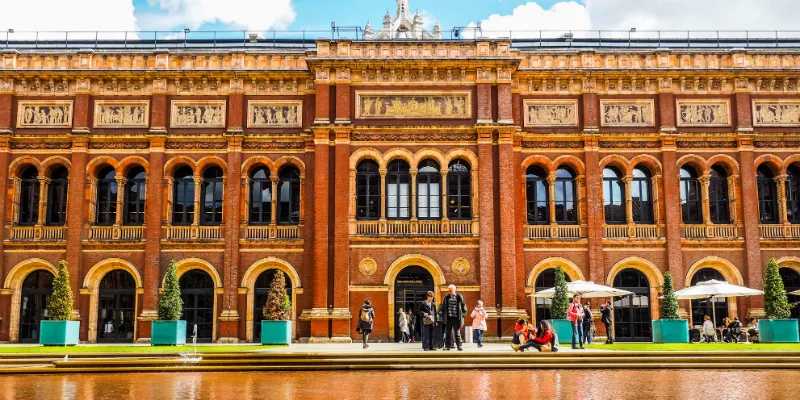
The Victoria and Albert Museum
The 11-mere long central blown glass chandelier is an art work in itself! Displays are divided across materials and techniques and countries as well metalware, stained glass, sculpture, tapestries, furniture, gold, and silver.
We also figured that a packed lunch on the go was the best way to do London’s museum circuit as it saves time and money. We returned after lunch to check out the interactive experiences.
I tried on a Victorian corset, crinoline (the wire umbrella that made gowns look like huge domes) and an inverness cape, while my young man built a crystal palace and danced at a virtual ball. We trundled through rooms featuring gingerbread moulds, exotic clocks and porcelain, decanters and wash stands, moustache spoons (yes, it is a thing – a soup spoon with strips to prevent the moustache from getting wet!), jewellery (I could spend an entire day with this dazzling collection alone!), sculpture, royal robes, and Tipu’s Tiger.
There is also some emotional turmoil you experience when you see something from your own country trapped in a glass case in a foreign land. There is a compelling case being made by several countries including Australia, Greece, in Africa and even India to repatriate cultural objects looted during Colonial rule that occupy a space of pride in London museums.
A temple of modern art
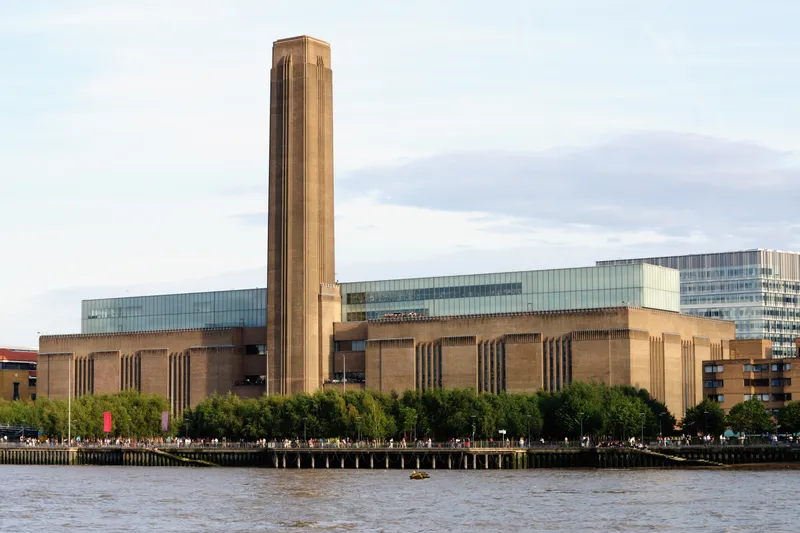
The Tate Modern
It’s not possible to be cossetted in a museum every day so we mixed our ‘inside’ days with expeditions to Greenwich, Windsor, and Cambridge. So, when we hit the Tate Modern after a break, we were ready to soak in more art.
The industrial looking building that houses the Tate is in itself an experience – a turbine hall and boiler house you would think hardly makes for a gallery – but the Tate Modern is located in a disused power station by the Thames. With its tagline, ‘See great art for free’, this Temple of Modern Art dazzled us with Salvador Dali, Picasso, and Andy Warhol, and modern art installations that challenged our perceptions.
The viewing deck on the 10th level offered a break and some great sprawling views of London, and its contrasting modern steely versus classic landscape.
And, finally – The British Museum
The British Museum was a befitting final stop before we bid London goodbye. With its expansive Great Court illuminated by a stream of light from atop, the sight can be staggering.
The Egyptian sculptures and mummies, the Rosetta Stone from 196 BC, Parthenon sculptures from Greece, Rodin’s The Thinker bronze sculpture, the Assyrian lion hunt reliefs, and artefacts from across civilisations – names that were mere school textbook chapters suddenly came to life.
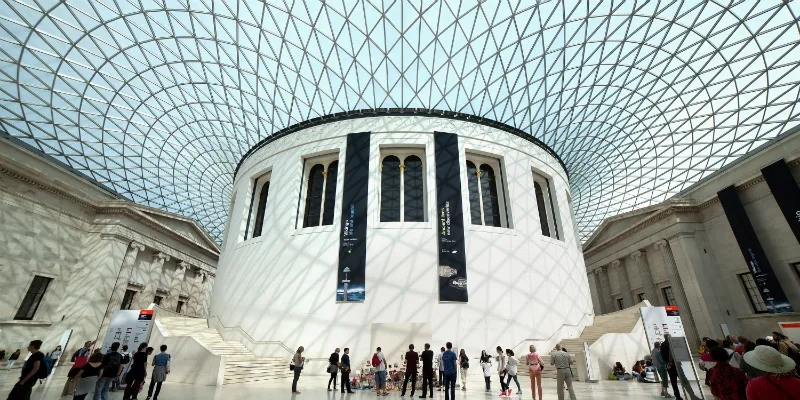
The British Museum
Our already saturated brains were bombarded over the next few hours with fleeting images as we sailed through more artefacts from Africa and Rome, the Middle East, Asia, and Europe – in great delight.
Five museums on a holiday showed us a world we had never known and whispered into our ears countless stories on which our own present is built, even today.







